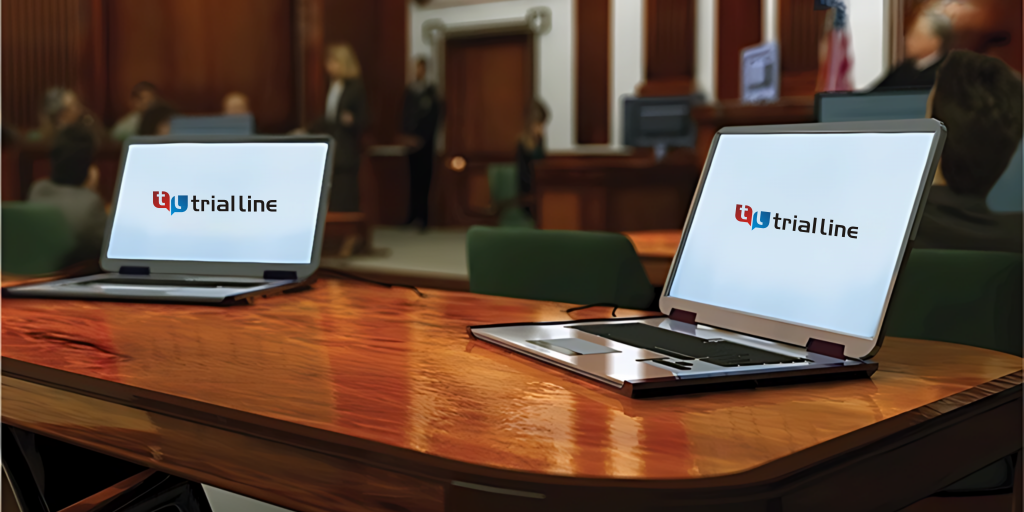Guarantee your evidence is clear with high-quality trial presentations tailored to your needs.
Guarantee your evidence is clear with high-quality trial presentations tailored to your needs.
Blog Article
How Test Presentations Enhance Your Debate and Encourage Jurors
Test discussions work as an essential system for improving legal arguments and encouraging jurors. By incorporating aesthetic aids, narrative structures, and emotional engagement, lawyers can produce a compelling case that resonates on numerous degrees. The tactical use visuals not only makes clear complicated info but additionally catches jurors' interest more effectively than words alone. The art of narration plays a similarly vital role in changing factual proof right into a compelling story, shaping jurors' perceptions. Recognizing these aspects can significantly influence test outcomes, elevating the concern of how each part adds to this detailed dynamic.

Relevance of Aesthetic Aids
Visual help play a vital function in enhancing the performance of trial presentations, as they can dramatically boost audience engagement and retention of details. In the context of a trial, where jurors are entrusted with processing complex info, visual help serve to streamline and clear up bottom lines. Graphes, graphs, and photos can convey information and concepts that might or else overwhelm or perplex jurors, enabling an extra simple understanding of the proof presented.
Additionally, aesthetic aids aid in preserving juror focus throughout the proceedings. By damaging the uniformity of verbal testament, these tools can punctuate critical disagreements, making them a lot more remarkable. Reliable visual help can additionally stimulate psychological reactions, which can be crucial in persuading jurors to align with the presenter's story.

Crafting Engaging Narratives
An engaging narrative is vital in test presentations, as it works as the foundation of efficient persuasion. It allows attorneys to weave with each other truths, evidence, and emotional components into a systematic tale that reverberates with jurors. This narrative structure enables jurors to comprehend the complexities of the case while assisting them with the attorney's debate.
To craft a compelling story, attorneys must concentrate on clearness and comprehensibility. This involves establishing a clear lead character-- usually the client-- and describing their journey through the occasions concerned. Offering the facts in a logical series enhances comprehension and preserves engagement. In addition, using dazzling descriptions can produce psychological images that assist jurors picture the occasions, making the story a lot more memorable.
Furthermore, incorporating crucial themes throughout the discussion reinforces the core message and aids in retention - trial presentations. The narrative needs to not only convey details however likewise evoke a sense of justice, highlighting the stakes entailed. Inevitably, a sound narrative fosters a link between the jurors and the case, placing the attorney's disagreement as both credible and engaging, consequently raising the possibility of a beneficial verdict

Engaging the Court Psychologically
Reliable jury interaction hinges on the lawyer's capacity to connect with jurors on a psychological degree. This connection can considerably impact jurors' assumptions and their best decision-making.
Aesthetic aids, such as photos or video clips, can even more boost emotional engagement, offering jurors with vivid representations of the useful content case's human elements. Crafting a story that highlights the battles and victories of the individuals included guarantees that jurors see beyond the legal debates and recognize the human consequences of their decisions.
Additionally, tone and body language play a vital role in conveying emotion. A lawyer's passionate delivery can resonate with jurors, reinforcing their emotional investment in case. It's necessary to balance psychological charms with valid evidence, ensuring that jurors really feel obliged to act while remaining grounded in the reality. Eventually, a psychologically involved court is most likely to be convinced, making emotional connection a vital component of efficient test discussions.
Structuring Your Discussion

The body of the discussion ought to be realistically segmented into bottom lines, each supported by engaging evidence. It is helpful to utilize storytelling techniques to weave realities into a narrative that jurors can quickly follow. Visual help, such as graphes and videos, can enhance comprehension and interaction, helping to highlight critical items of proof.
Real-World Situation Studies
Analyzing real-world study supplies invaluable understandings into the art of trial presentations and persuasion. The landmark case of "O.J. Simpson v. The People of California" highlights exactly how visual aids and engaging narratives can persuade court understandings. The defense group efficiently utilized a strategy that integrated top-level specialist statements with multimedia look what i found presentations, which astounded jurors and ultimately influenced their decision.
Another remarkable instance is the "McDonald's Coffee Instance," where the plaintiff's attorneys used visuals pictures of the injuries suffered by Stella Liebeck. trial presentations. This plain aesthetic proof played an important function in sharing the seriousness of her burns, bring about a significant jury honor. Such situations demonstrate that impactful trial discussions frequently depend upon the effective combination of visuals and storytelling to stimulate psychological reactions from jurors
Furthermore, the "Casey Anthony Test" highlighted the relevance of narrative comprehensibility and reputation. The prosecution's failure to develop an engaging timeline lessened their convincing power, underscoring the need of a well-structured presentation. Analyzing these cases discloses that effective trial discussions need tactical preparation, psychological involvement, and the ability to reverberate with jurors' worths and beliefs.
Conclusion
Trial presentations considerably boost arguments and persuade jurors via the critical use of aesthetic help, engaging narratives, and psychological involvement. A well-structured presentation equilibriums psychological charms with factual evidence, inevitably resonating with jurors' values.
Report this page